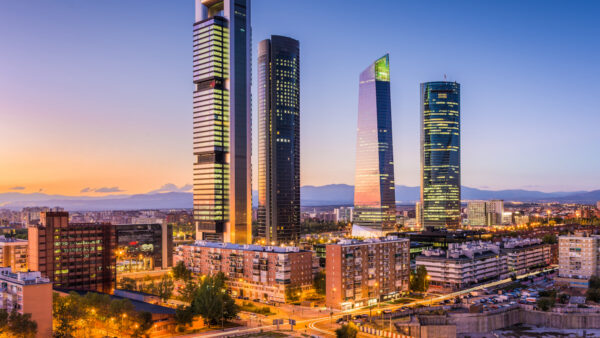Working during a heat wave can be very dangerous. The death of a street sweeper in Madrid on July 15 due to heat stroke has reopened the debate: should work rules be rethought in the face of rising summer temperatures?
Working during a heat wave can be very dangerous. The death of a street sweeper in Madrid on July 15 due to heat stroke has reopened the debate: should work rules be rethought in the face of rising summer temperatures?
Europe is in the midst of a heat wave that is on track to become one of the most severe since records began. Several countries are breaking all-time temperature records. So, in today’s post we tell you everything you need to know about working during a heat wave and our tips for handling it as safely as possible.
What Does The Law Say about Working in A Heat Wave?
Regulations in Western countries do not usually include heat as a specific occupational hazard. In Spain, for example, there is a maximum and minimum temperature for working, but only indoors. When it comes to outdoor work, there are no regulations in this respect.
In other countries, the situation is even worse. Many northern countries are not used to extreme temperatures. In the UK, for example, temperatures have reached 40°C, while the regulations do not set any maximum temperature limit for work.
In a context of climate change and generally rising temperatures, climate risks are becoming a priority. It is becoming increasingly necessary to take measures to deal with heat at work. Prioritizing teleworking or adapting the working day to avoid the hottest hours are good options.
The debate is necessary.Worker safety is now more of a priority than ever.
Pay Attention To The 3 Main Symptoms of Heat Stroke
The main risk of working during a heat wave is heat stroke. This process causes our body to be unable to regulate its temperature and can be lethal. Therefore, it is very important to be prepared to detect it.
To find out if you or any of your colleagues are suffering from heat stroke, take note of the three most obvious symptoms:
- No sweating. This is an effect of the rapid dehydration the body is undergoing. In its struggle to hold on to as much water as possible, it stops sweating. If you notice that you or someone on your team stops sweating in very extreme temperatures, be concerned.
- Shortness of breath. Having tachycardia or feeling short of breath is a clear sign that you are suffering from heat stroke. If you feel that your partner stops talking normally, this is an indicator that something serious is happening.
- Headache. Disorientation and headache is common during heat wave episodes. However, when it becomes more pronounced and the person is unable to remain conscious, immediate action should be taken.
In these cases, the priority is to move the person to a cooler place. We can cool the body with water or drink. Of course, in more serious cases we should call the emergency services and transfer the affected person to a hospital. If the person loses consciousness or is not able to breathe normally, do not hesitate.
Working During a Heat Wave: Our 6 Tips
We know that working during a heat wave can be nerve-wracking. While we can’t make it easy for you to lower the temperature, there are ways to make it a little more bearable.
If you have office jobs, you probably have an air conditioning system that regulates the heat. But if this is not your case, here are our 6 tips to make your working hours easier:
- The basics: water and shade. You already know that you should not wait until you are thirsty to drink. Always have a water bottle with you, ideally a steel thermos. They are more expensive than plastic ones, but they keep the water cool for hours. You’ll appreciate it! Remember to drink every hour to keep your body hydrated. And if you work outdoors, try to stay in the shade as much as possible.
- Avoid working alone. Working alone during a heat wave can be very dangerous. Ideally, work should be done in pairs or groups, so that someone can act in an emergency situation. In the event that you are forced to work alone, inform your managers of your location and make regular status updates.
- Ask the company for a schedule adjustment. In some cases it is complicated, but your job may allow it. Getting to work as soon as possible and avoiding the hottest hours of the day is essential to avoid health problems. In addition, this increases productivity, since you will do more work in cooler hours, where it is easier to maintain concentration.
- Take more breaks.Taking breaks to hydrate can help you. Find cooler, ventilated areas and rest there for a few minutes to keep your body from overheating. If necessary, ask permission to do so.
- Careful with your clothing. It is important to wear loose-fitting, light-colored clothing that helps ventilate your body. If you are teleworking or somewhere in the shade, you can take off as many layers as you wish (although be careful with video calls!). However, if you’re working in the sun, keep your shirt on. While it may seem like it will cool you down, you may end up drawing in more heat and suffering from sun damage to your skin. Wear hats to protect yourself.
- Telecommuting is best done outside. If you are lucky and can use a fan or air conditioning at home, do it. But if the electricity bill is too high or you don’t feel comfortable, don’t hesitate to change the space. Telecommuting from a coffee shop, library or coworking space will always be cooler and much more environmentally friendly. Find your ideal place to escape the heat wave!
A heat wave is a very difficult situation. Follow our advice and always stay safe, avoiding risks. And don’t hesitate to trust us to find the job of your dreams. It’s waiting for you on Jobstoday.world. Not looking for it yet? We are waiting for you.
See more:
- How does it sound to work and travel?
- The world is returning to tourism… and not everyone is happy about it.
- Did you know that teleworking is disappearing?




